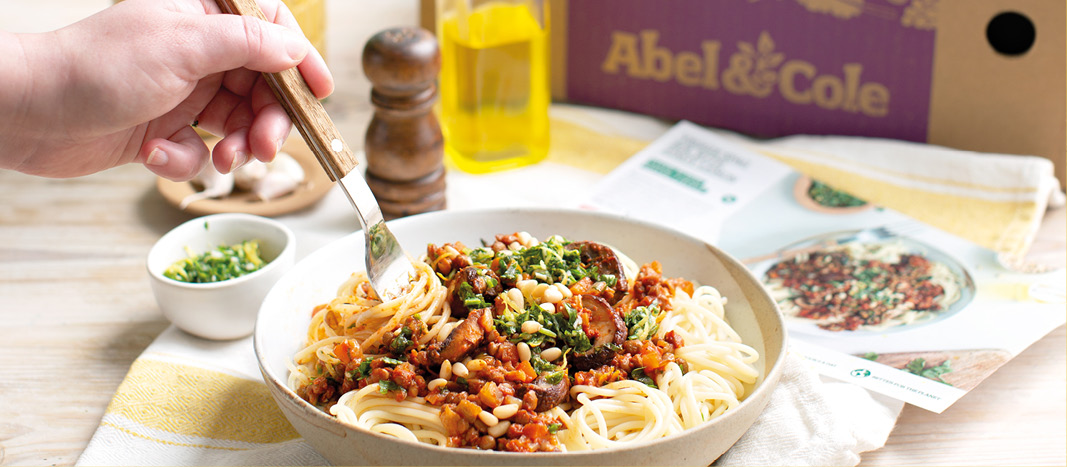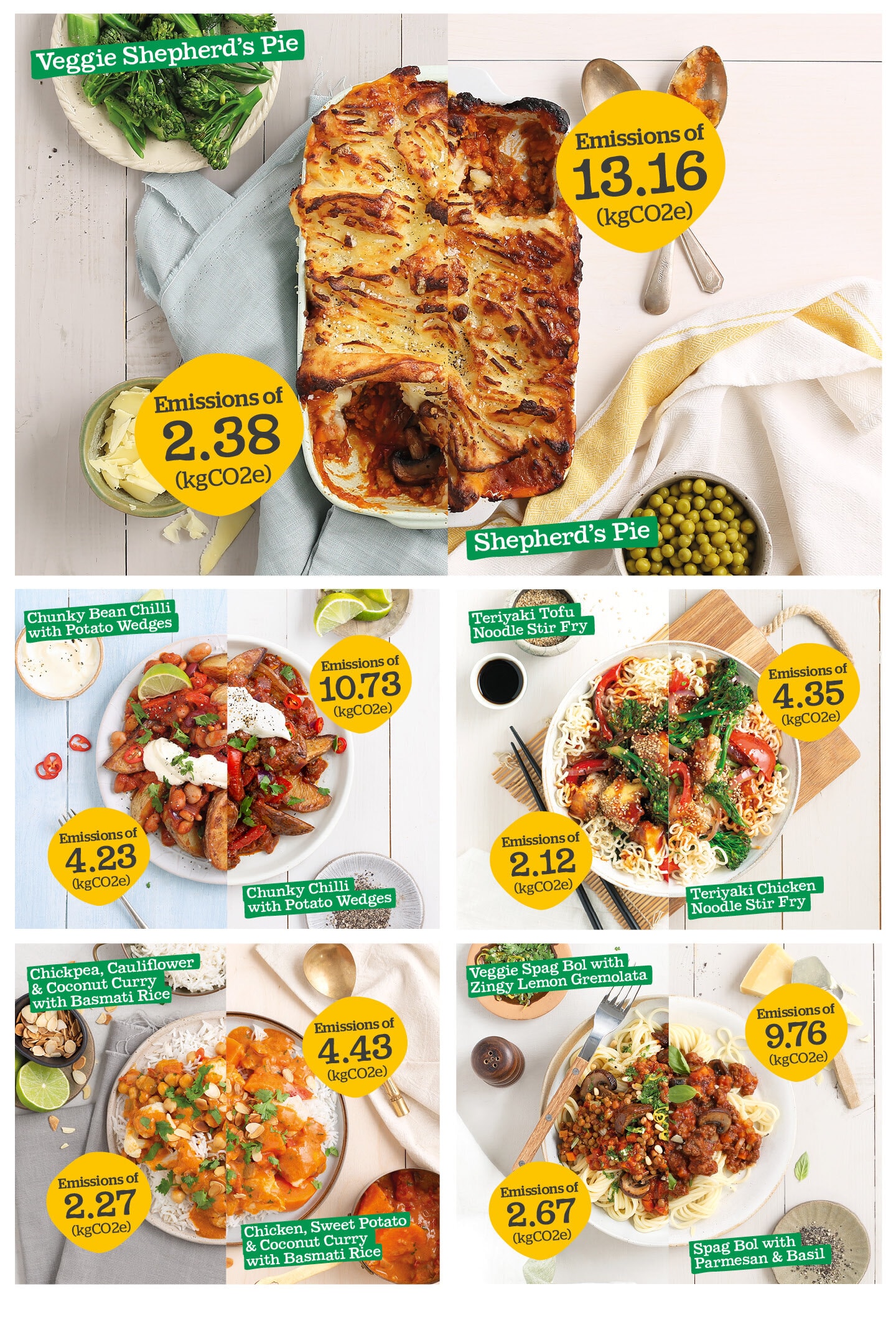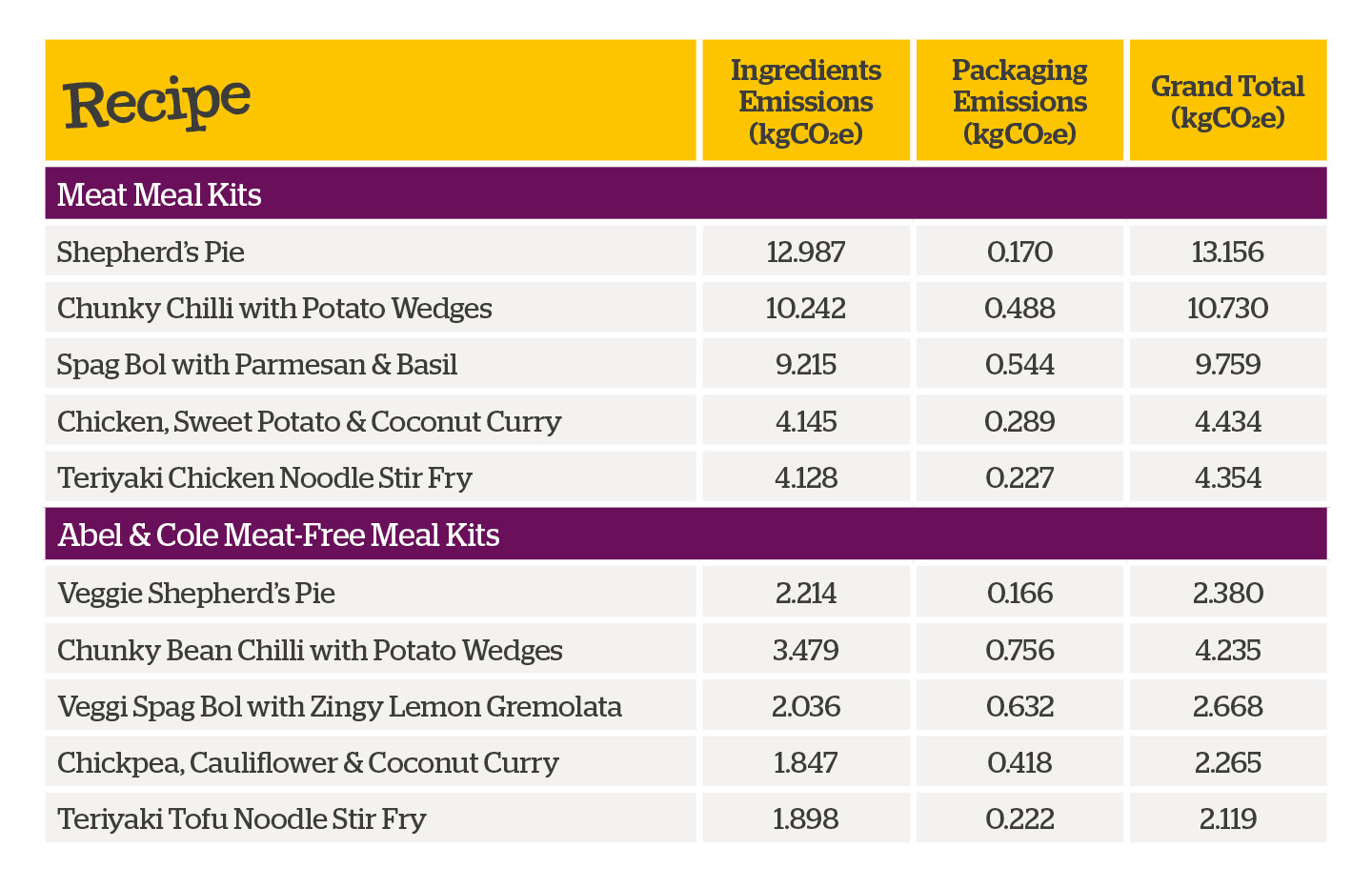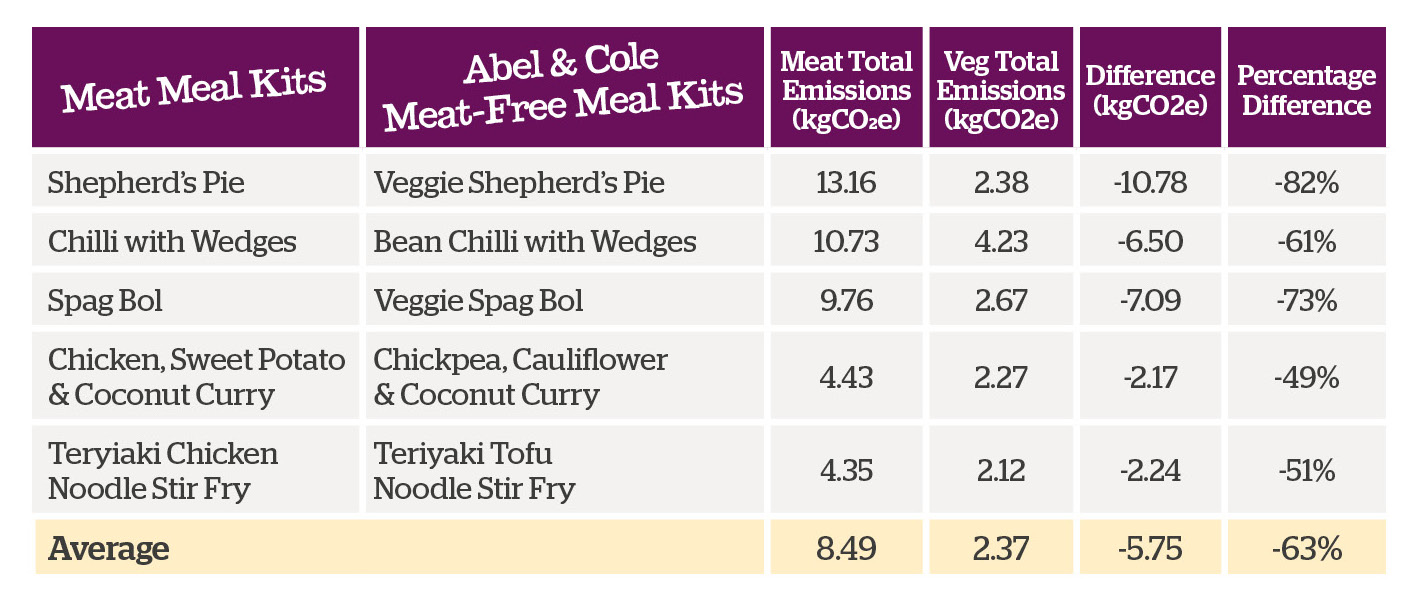Our 63% Less Carbon Study

In July 2021, we conducted a study to compare the carbon footprints of five of our new Meat-Free Meal Kits, compared to their equivalent meat-based dishes. To complete this study, we worked with Environmental Management Consultancy, Green Element.
Our study compared the following five Abel & Cole Meat-Free Meal Kits against a typical, meat-based version of the same dish.
1. Abel & Cole Veggie Shepherd’s Pie vs. Shepherd’s Pie (Lamb)
2. Abel & Cole Chunky Bean Chilli with Potato Wedges vs. Chunky Chilli (Beef) with Potato Wedges
3. Abel & Cole Veggie Spaghetti Bolognese with Zesty Lemon Gremolata vs. Spaghetti Bolognese (Beef) with Parmesan & Basil
4. Abel & Cole Chickpea, Cauliflower & Coconut Curry with Basmati Rice vs. Chicken, Sweet Potato & Coconut Curry with Basmati Rice
5. Abel & Cole Teriyaki Tofu Noodle Stir-Fry vs. Teriyaki Chicken Noodle Stir-Fry
To ensure fairness, all of the ingredients used to create each dish, both meat-based and meat-free, were organic.

A carbon footprint is measured in tonnes of greenhouse gas emissions (GHGs). Greenhouse gases are those which have a global warming potential. The main three GHGs are carbon dioxide, methane and nitrous oxide, and a carbon footprint includes a total of seven gas groups agreed by the Kyoto Protocol.
Emissions of different gases are converted into CO2e, or carbon dioxide equivalent, which expresses the carbon footprint as a single number with the same global warming potential as the sum of the different greenhouse gases measured.
The GHG Protocol Corporate Standard classifies a business’ GHG emissions as falling into three ‘Scopes’:
1. Scope 1 emissions are direct emissions from owned or controlled sources – an example would be the fuel that our vans use.
2. Scope 2 emissions are indirect emissions that come from the generation of purchased electricity.
3. Scope 3 emissions are all indirect emissions that occur in the value chain – this includes things like our waste, water usage and the production of uniforms.
WHAT'S INCLUDED AND OMITTED IN THIS STUDY'S CARBON FOOTPRINT?
The purpose of this study was to compare five of our Meat-Free Meal Kits against their meat-based equivalents. Therefore, the boundary of the carbon analysis was drawn to exclude those areas that would be the same in both instances. As the box weights would be very similar, and the sources vary seasonally, we have excluded transportation emissions from the final totals.
Included in the carbon footprint calculations are the:
• Embodied emissions of all ingredients
• Embodied emissions of all primary, secondary and tertiary packaging for the Meal Kits
Excluded from the carbon footprint calculations are the:
• Transport of ingredients and packaging from suppliers to Abel & Cole
• Transport of the Meal Kits to Abel & Cole customers
The table below shows both the ingredients and packaging emissions for each of the five meat-based meals and the five Abel & Cole Meat-Free Meal Kits.
The third column shows the total carbon emissions of each Meal Kit, expressed as carbon dioxide equivalent, which have been calculated by combining the ingredients and packaging emissions.

We then used this data to calculate the difference in carbon emissions between our five Meat-Free Meal Kits and their meat-based counterparts.
The table below shows a breakdown of this, with the overall average expressed in absolute difference (kgCO2e) and percentage (%) difference.

According to the data, the Shepherd’s Pie meal exhibited the biggest drop in carbon emissions from the meat to the meat-free version; 10.78 kgCO2e less GHG emissions per box (82% decrease). In this example, the organic lamb used releases >44x more kgCO2e per kg than the pea and bean mix used in the meat-free version.
The study demonstrated that all five Meat-Free Meal Kits tested were significantly less carbon-intensive than their meat-based counterparts, and as such had lower carbon footprints. On average, the meat-based meals released >3x more kgCO2e per Meal Kit than our meat-free alternatives.
We’re incredibly proud to be able to say that, according to the results of our comparative study, our Meat-Free Meal Kits serve up 63% less carbon per plate, on average.
So why not help reduce your carbon footprint at home by enjoying a sustainable switch at dinnertime? See which Meat-Free Meal Kits are on the menu this week, right here.
Published August 2021


